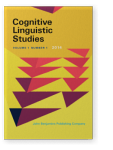Vol. 1:1 (2014) ► pp.101–130
Source domains in conceptualizations of the state in Chinese and Hungarian political discourse
In the view of cognitive linguistics, abstract concepts are often understood through more concrete domains of experience, and the resulting conceptual metaphors deeply influence the way people think of and reason about them. Over the past few decades, several interesting studies have been published about this feature in the realm of politics, where the power of speech is greatly felt. One of the most basic concepts of this realm is that of the state, sometimes equated with the country people live in. This paper discusses similarities and differences in the conceptualization of the state in Chinese political discourse on one hand, and Hungarian political discourse on the other, as they are reflected in the source domains used as vehicles of understanding. The discussion is based on corpus research findings, but the analysis relies both on individual intuition of the authors, members of these two cultures (yielding quality analysis), and on frequency counts in the texts of the corpora (quantity analysis). The functions of culture in shaping metaphors and choosing a specific source domain are also taken into consideration in this contrastive study of the two languages.
